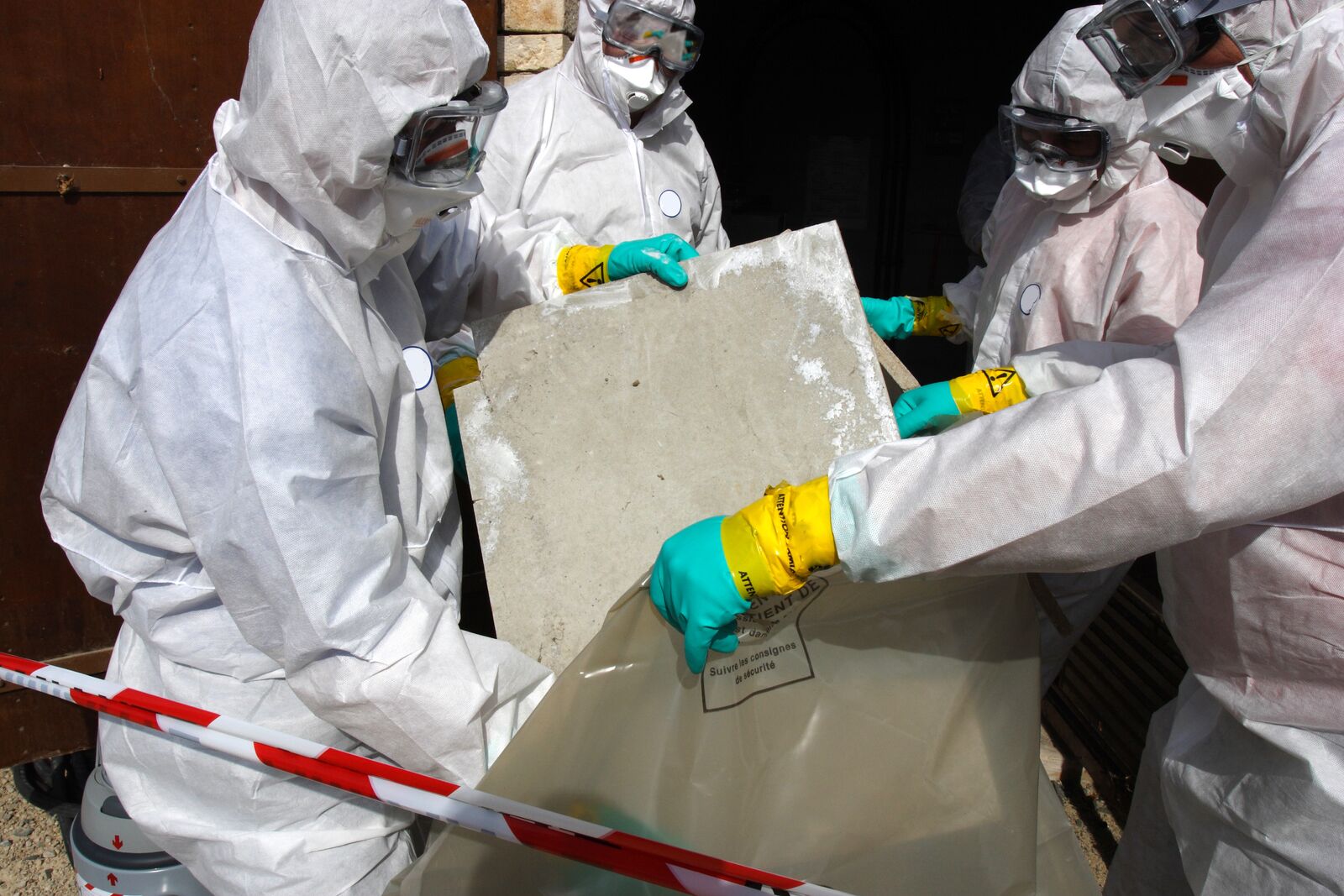Understanding Mold and Its Dangers
Mold, a type of fungus, is a common household problem that can go unnoticed until it becomes a significant issue. It thrives in damp and poorly ventilated areas, such as bathrooms, basements, and kitchens. While some types of mold are harmless, others can pose serious risks to both your investment and your health.
When left untreated, mold can cause structural damage to your property. It feeds on organic materials such as wood, drywall, and fabric, leading to decay and weakening of the affected surfaces. This not only affects the integrity of your home but also diminishes its value. Additionally, mold can trigger respiratory issues and allergies, particularly in individuals with weakened immune systems or pre-existing respiratory conditions.
Signs of Mold Infestation in Your Home or Property
Detecting mold early is crucial to prevent it from spreading and causing further damage. Here are some common signs of mold infestation to look out for:
- Visible Mold: Obvious patches of mold growth on walls, ceilings, or floors are a clear indication of a problem. Mold can appear in various colors, such as black, green, or white.
- Musty Odor: Mold releases a distinct, earthy smell that often resembles dampness or mildew. If you notice an unpleasant odor in certain areas of your home, it could be a sign of hidden mold.
- Water Stains: Discoloration or water stains on walls or ceilings can be an indication of past or current water intrusion, which creates an ideal environment for mold growth.
- Allergic Reactions: If you or your family members experience unexplained allergic symptoms such as sneezing, coughing, itchy eyes, or skin irritation, mold could be the culprit.
If you notice any of these signs, it’s important to take immediate action to address the mold problem and protect both your investment and your health.
The Importance of Mold Remediation
Mold remediation is the process of removing mold, preventing its regrowth, and restoring the affected areas to their original condition. It is a vital step in protecting both your property and your well-being. Here’s why mold remediation should never be taken lightly:
- Preserving Your Investment: Mold can cause extensive damage to your property’s structure and materials. By addressing the issue promptly, you can prevent costly repairs and maintain the value of your investment.
- Protecting Your Health: Exposure to mold can lead to a range of health problems, including respiratory issues, allergies, and even infections. Mold spores can become airborne and circulate throughout your home, posing a risk to everyone living there.
- Preventing Further Spread: Mold can quickly spread to other areas of your property if left untreated. Professional mold remediation ensures that the mold is completely eradicated, reducing the risk of future infestations.
DIY Mold Remediation vs. Professional Mold Remediation
While it may be tempting to tackle mold remediation yourself, it’s important to consider the potential risks and limitations of a DIY approach. Here’s a comparison between DIY mold remediation and hiring professional services:
DIY Mold Remediation
DIY mold remediation involves using household cleaners and basic tools to remove visible mold. While it may be suitable for small and easily accessible areas, it is not recommended for extensive or hidden mold infestations. DIY methods often fail to address the underlying cause of the mold growth, leading to regrowth and recurring problems.
Professional Mold Remediation
Hiring a professional mold remediation company offers several advantages. Experienced professionals have the knowledge, equipment, and expertise to handle mold problems effectively. They can identify the source of the mold, contain the affected areas to prevent cross-contamination, remove mold safely, and ensure proper disposal. Additionally, professional services offer long-term solutions and guarantee the complete eradication of mold.
Steps in the Mold Remediation Process
Professional mold remediation follows a systematic approach to ensure thorough removal of mold and restoration of the affected areas. The steps involved in the process may vary depending on the severity of the infestation, but generally include the following:
- Inspection and Assessment: A thorough inspection is conducted to identify the extent of the mold problem and determine the best course of action. This includes identifying the source of moisture that is fueling the mold growth.
- Containment: To prevent the spread of mold spores, the affected areas are isolated using physical barriers and negative air pressure systems. This prevents cross-contamination and protects unaffected areas.
- Removal and Cleaning: Mold-infested materials are carefully removed and disposed of following industry guidelines. The remaining surfaces are thoroughly cleaned using specialized techniques and antimicrobial solutions to eliminate any residual mold.
- Drying and Dehumidification: After removing the mold, the affected areas are dried using professional-grade drying equipment to ensure no moisture remains. Dehumidifiers may also be used to maintain optimal humidity levels.
- Restoration: Any damaged materials, such as drywall or flooring, are repaired or replaced to restore the affected areas to their pre-mold condition. This may include repainting, retiling, or replacing damaged fixtures.
Preventing Mold Growth in Your Home or Property
Prevention is key when it comes to mold growth. By taking proactive measures, you can minimize the risk of mold infestations in your home or property. Here are some effective strategies to prevent mold:
- Control Moisture: Keep your home well-ventilated and maintain optimal humidity levels. Use exhaust fans in bathrooms and kitchens to reduce moisture buildup. Fix any leaks or water intrusion issues promptly.
- Proper Insulation: Ensure proper insulation in areas prone to condensation, such as attics and basements. Insulate pipes to prevent condensation and minimize the chances of mold growth.
- Regular Maintenance: Regularly inspect your home for any signs of water damage, leaks, or dampness. Address any issues immediately to prevent mold growth.
- Reduce Clutter: Cluttered spaces can provide hiding spots for mold growth. Keep your home clean and organized to minimize the risk of mold infestations.
- Monitor Indoor Humidity: Use a hygrometer to monitor indoor humidity levels. Ideally, it should be between 30% and 50%. Consider using a dehumidifier in areas with high humidity.
Hiring a Reputable Mold Remediation Company
When it comes to mold remediation, it’s crucial to hire a reputable and experienced company to ensure the job is done right. Here are some factors to consider when choosing a mold remediation company:
- Certifications and Expertise: Look for a company that employs certified mold remediation professionals with extensive knowledge and experience in the field.
- Proper Equipment: Ensure the company uses state-of-the-art equipment and follows industry best practices for mold removal and restoration.
- Positive Reviews and References: Read online reviews and seek references from previous customers to gauge the company’s reputation and customer satisfaction.
- Comprehensive Services: Choose a company that offers a range of mold remediation services, including inspection, testing, removal, and restoration, to provide a holistic solution.
- Transparent Pricing: Request detailed pricing information upfront to ensure there are no hidden costs or surprises.
The Cost of Mold Remediation
The cost of mold remediation can vary depending on various factors, such as the extent of the mold infestation, the size of the affected area, and the complexity of the remediation process. It’s important to remember that investing in professional mold remediation is an investment in the safety of your home and the health of your loved ones. The cost of remediation is minimal compared to the potential expenses of extensive property damage or medical bills resulting from mold-related health issues.
Health Risks Associated with Mold Exposure
Exposure to mold can have detrimental effects on your health, especially if you have allergies or respiratory conditions. Here are some health risks associated with mold exposure:
- Respiratory Issues: Mold spores can irritate the respiratory system, leading to symptoms such as coughing, wheezing, shortness of breath, and chest tightness. Individuals with asthma or allergies are particularly susceptible.
- Allergic Reactions: Mold can trigger allergic reactions in susceptible individuals, causing symptoms such as sneezing, runny nose, itchy eyes, and skin rashes.
- Infections: Certain types of mold, such as black mold (Stachybotrys chartarum), can produce mycotoxins that can cause infections, particularly in individuals with weakened immune systems.
- Toxic Mold Syndrome: Prolonged exposure to toxic molds can lead to a condition known as toxic mold syndrome, which manifests as a combination of respiratory, neurological, and immune system symptoms.
Taking Action to Protect Your Investment and Health
Don’t let mold compromise the safety of your investment and the health of your loved ones. Contact Green Guard Mold Remediation Plainfield today for professional mold remediation services. Our team of experts will ensure the complete removal of mold, prevent regrowth, and restore your property to its pristine condition. Trust us to provide you with a mold-free environment so that you can breathe easy and enjoy your home to the fullest. Invest in the long-term well-being of your property and your family.


 Heading Sub Title
Heading Sub Title 


Leave a Reply